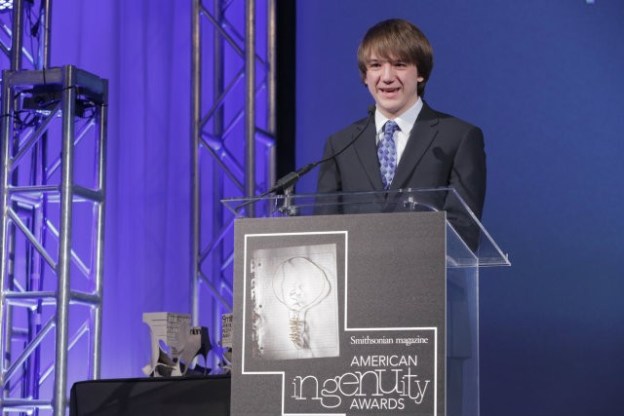
What were you doing when you were 15 years old? Strolling the mall? LOL-ing on a chat client with your best friends whom you just saw 30 minutes ago when you left school? Don’t be embarrassed, we all have those typical, unimportant childhood moments that we occasionally long for. But for 15-year-old Jack Andraka, being a teen isn’t just about rolling with friends and trying to get good grades for the parents: He’s gone and invented a sensor that could detect early stage pancreatic cancer – a process which could bump patient survival rate “close to 100 percent.”
Recently honored with Intel’s Gordon E. Moore Award at the company’s annual Science and Engineering Fair, Andraka developed a dip-stick sensor that tests patients for levels of mesothelin, a biomarker found in blood and urine used to detect early stage pancreatic cancer. The sensor costs approximately three cents to make, and could arm patients with the most cost-efficient and effective way to test for early stages of the disease before it quickly grows into its final stages. In comparison, current methods of pancreatic cancer detection can only uncover its presence after the cancer’s made its way through the patient’s system. Because of this, pancreatic cancer patients have low survival rates; on average, 20 percent of patients manage a one-year survival rate while five-year rates stand at a woeful four percent.
“Essentially what I’m envisioning here is that this could be on your shelf at your Walgreens, your Kmart,” Andraka tells TakePart. “Let’s say you suspect you have a condition … you buy the test for that. And you can see immediately if you have it. Instead of your doctor being the doctor, you’re the doctor.”
The dip-stick sensors can also be altered to check for other biomarkers, meaning the low-cost device could go on to test for various types of diseases such as HIV, tuberculosis, other forms of cancer, or environmental contaminants such as E. Coli and salmonella. Andraka is currently in talks with major medical companies such as LabCorp and QuestDiagnostics to bring his sensor kit to the masses. This, of course, after he’d been rejected by nearly 200 doctors who claimed his invention would never work. It was only until Andraka piqued the interest of one Dr. Anirban Maitra at John Hopkins University who confirmed the sensor as a successful device.
“He’s ahead of his time in many ways,” Maitra tells Smithsonian Magazine. “Taking one idea and seeing how to extrapolate something even more expansive, that’s the difference between being great and being a genius.”
A well-deserved congratulations obviously goes out to the young man, who developed something that could change the course of medicine before he’s legally allowed to drive. But before you get too upset, just remember that Andraka is also still your typical teen: According to BBC, he likes to kayak, watch “Glee,” and search for random musings on Google. Meanwhile, we’re just gonna sink back in our seats, cry about our worthless lives, and pwn some noobs at Halo.


